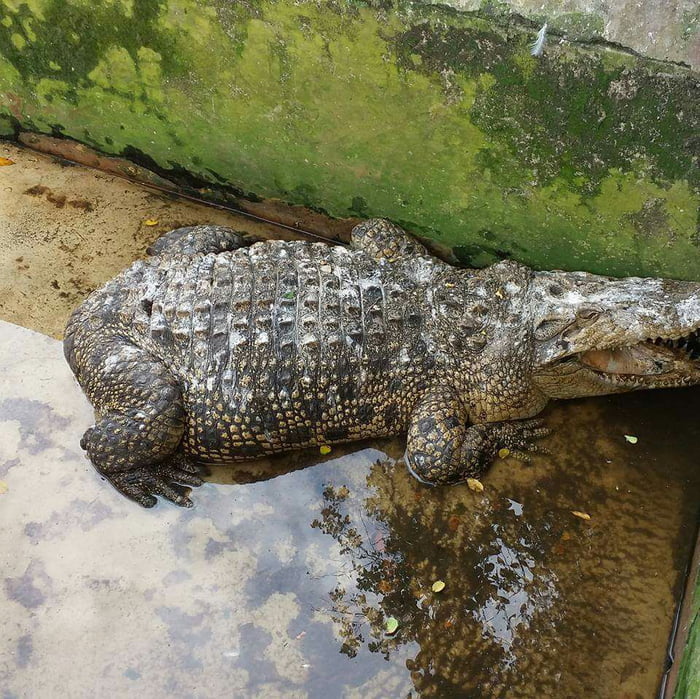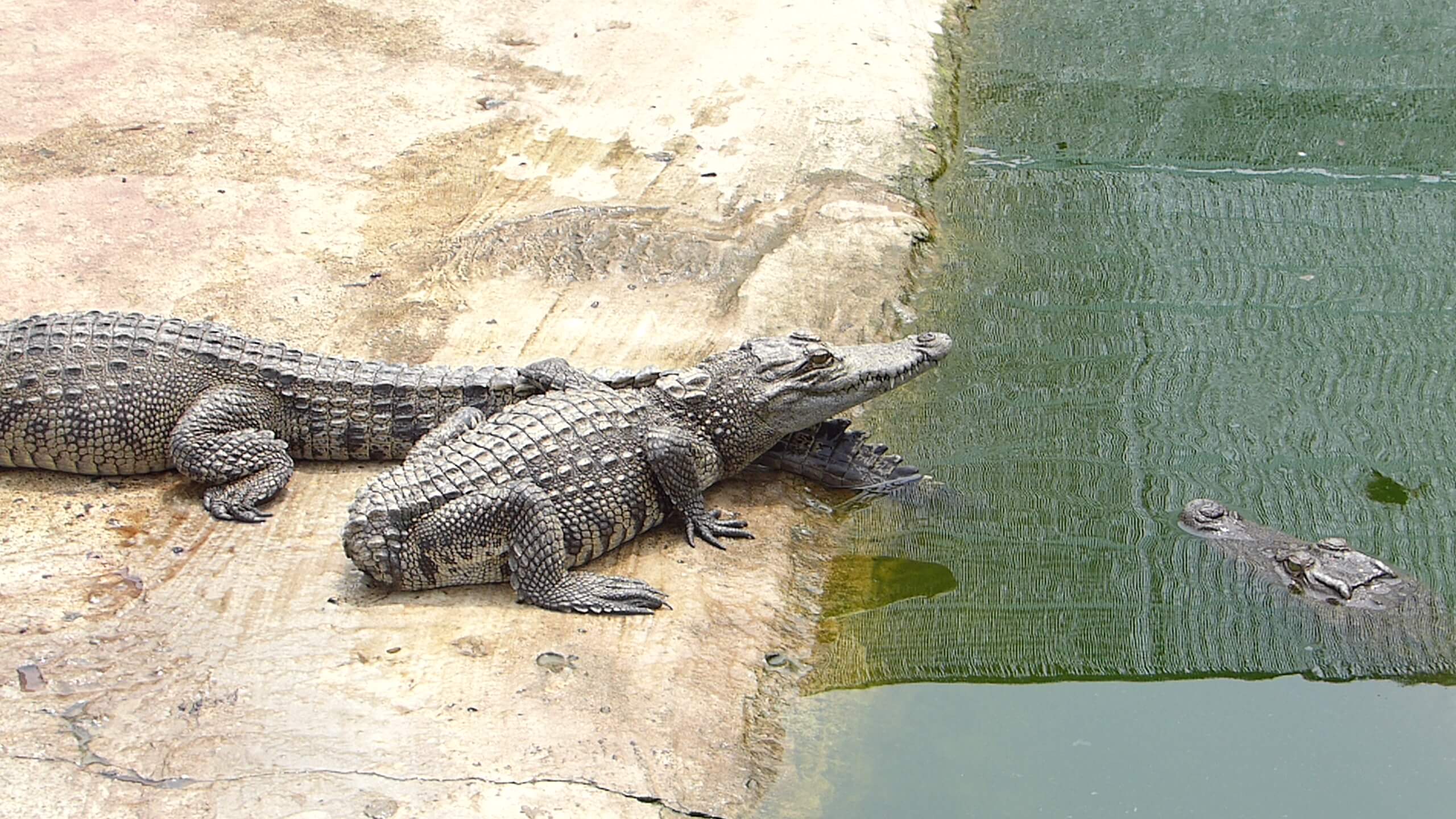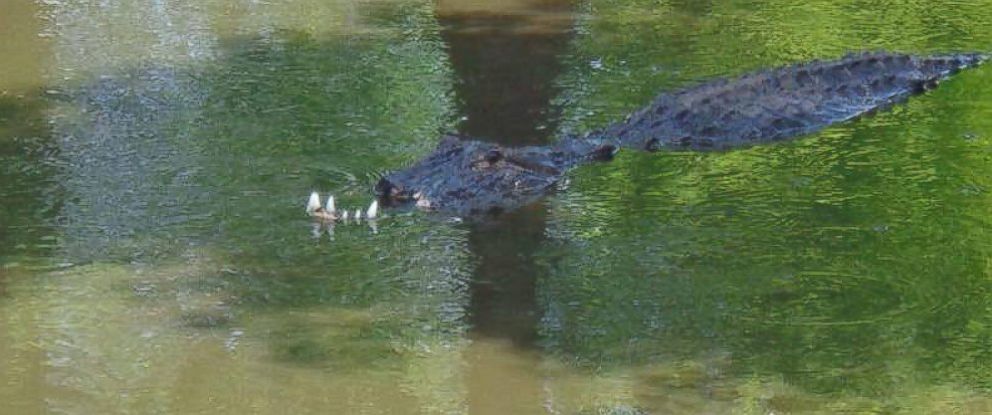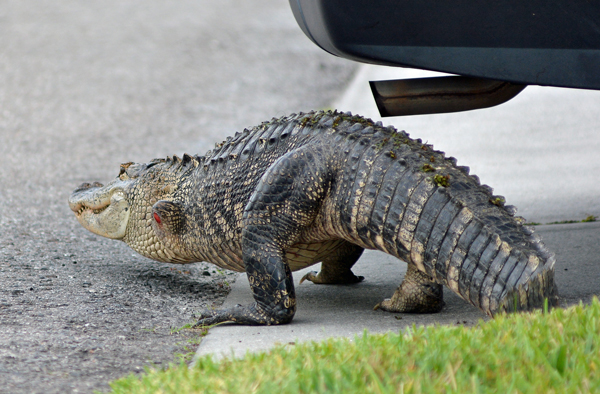Post by Infinity Blade on Nov 26, 2018 7:43:10 GMT 5
Since much of the stuff I posted about Gorgosaurus seems to be dead/not working, I've decided to post the following. It was originally a National Geographic article, but the Nat Geo website no longer shows you the article (thank god it was preserved elsewhere).
forum.hirntumorhilfe.de/neuroonkologie/presse-first-dinosaur-brain-tumor-found-1912.html
Edit: I have found further confirmation for this. First, the website of the Children's Museum of Indianapolis itself describes the same injuries: the broken left femur (with some piece of bone torn off), the jaw infection that resulted in tooth loss, etc., etc.
A book documenting facts and figures for theropods documents this as well.
And for the femur in particular (my favorite one, though it must have been unadulterated living hell for the tyrannosaur), a Tweet from Peter Larson, showing the broken greater trochanter (incidentally the shaft looks broken too).

Just so I don't forget this myself, in humans full weight-bearing after an isolated greater trochanter fracture is not permitted until healing becomes apparent, and first needs some protected weight-bearing with crutches (link). So yes, this Gorgosaurus absolutely would have had serious impediments when moving, and yet it still survived.
First Dinosaur Brain Tumor Found, Experts Suggest
Cancer isn't just an affliction of the modern world, new research suggests. Scientists behind the preparation of a fossil belonging to a new Tyrannosaurus rex relative believe they may have discovered the first known fossilized brain tumor.
Tumors are rare, even in living animals. But as a soft tissue, the average tumor's chance of making it to the fossil stage is even slimmer, said researchers behind the find, making the discovery highly unusual.
Scientist believe they have found the first fossilized brain tumor in a relative of the Tyrannosaurus rex known as Gorgosaurus. The tumor was located in a part of the brain that may have affected the animal's balance and agility, explaining the multiple injuries that are evident in its skeleton.
The golf-ball-sized brain tumor appears as a spongy mass inside the skull cavity of a 72-million-year-old Gorgosaurus fossil, now on display at The Children's Museum of Indianapolis in Indiana. The probable tumor would have affected the animal's balance and caused other damage, explaining the many crippling wounds and fractures recorded in her skeleton.
"This is the most damage I've ever seen in a skeleton where the animal survived," said paleontologist Peter Larson of the Black Hills Institute for Geological Research in Hill City, South Dakota. "We were amazed by just how many pathologies, or healed injuries, this animal has," he said.
Slender Cousin
Larson and Children's Museum curator of natural history, Dallas Evans, announced the find at last month's Society of Vertebrate Paleontology conference in Mineapolis/St Paul.
Amateur fossil hunters Cliff and Sandy Linster first discovered the female meat-eater, near Choteau, Montana, in 1997. The specimen, dated to the late Cretaceous Period, was found among the remains of hundreds of fossilized Maiasaura, a type of herd-living, duck-billed dinosaur.
Species in the genus Gorgosaurus were T-rex's slightly smaller, longer-limbed, and more slender cousins. They still packed a hefty punch, however: The average specimen was 25 feet (7.6 meters) in length, weighed a ton (0.9 metric ton) or more, and was equipped with over 60 four-to-five-inch-long (ten-to-thirteen-centimeter-long) serrated teeth. Just 20 Gorgosaurus specimens have ever been found, all in North America. This specimen-a previously unknown species-is one of the most complete.
Black Hills Institute researchers were first alerted to the unusual features of this fossil when they set about preparing and cleaning it for the Children's Museum. Alongside multiple healed fractures, Larson and colleagues first noticed an unusual rounded mass in the fossil's cranial cavity earlier this summer. "We found a weird mass of black material in the braincase," said Larson. "It was very bizarre. I'd never seen anything like it."
Bad Balance
Totally stumped as to what that mass might be, Larson and colleagues requested the assistance of veterinary pathologists from the pharmaceutical giant Eli Lilly and Company, a Children's Museum funder also based in Indianapolis.
Further probing with x-rays and an electron microscope revealed that the mass was originally formed from bony material, said Rachel Reams of Eli Lilly, but it didn't appear to be attached to the Gorgosaurus's skull. Ruling out the possibility that the mass was formed from skull fragments that fell into the brain cavity, the team decided that it was probably an extraskeletal osteosarcoma-a type of bone-producing tumor that can form in soft tissues.
The tumor would have encroached upon the cerebellum and brainstem, said Reams, the area of the brain responsible for balance and calculated movement. "Predators, especially, need to be able to make quick decisions and move rapidly," added Larson, who argues that the tumor could explain the juvenile animal's many other injuries.
Perhaps equivalent to an 18-year-old human, the Gorgosaurus may have eventually died from her crippling ailments. Her wounds included a fractured and infected left upper leg bone (femur) with a torn tendon and a shattered left shoulder girdle-both of which had healed-in addition to a badly-smashed lower right leg bone (fibula), and pus-filled, infected lower jaws.
Two other pathologies hint at the sex of the specimen. Fused vertebrae at the base of the tail are potentially a "mounting injury" sustained during mating with the larger male of the species. Plus, a loss of bone mass in the tail (like osteoporosis in humans) could be due to the calcium demanded by egg production, added Larson.
Uncertain Diagnosis
Although "a tumor is a distinct possibility, it is by no means a certain diagnosis," commented Elizabeth Rega, an anatomist and expert on fossil pathology at the Western University of Health Science in Pomona, California. Other possible explanations may be that the mass is a mineral concretion in the brain cavity or desiccated brain tissue. Thin, polished sections of the fossil must be examined microscopically to confirm the diagnosis, Rega said.
Rega, who has examined the new specimen, also helped diagnose injuries sustained by "Sue," the world-famous T-rex now on display at the Field Museum in Chicago, Illinois. "A mass such as this in a living animal would be suggestive of tumor, but there are other concerns with distorted and fossilized animals," she said.
Bruce Rothschild, a radiologist and director of the Arthritis Center of Northeast Ohio in Youngstown, disagreed. "It certainly would take a bizarre [fossilization] event to have created this appearance," he said. "The position and character may well be a tumor, but it still needs to be proven that this is not simply broken skull fragments that ´fell in.´"
Nevertheless, "this is an amazing specimen," commented Rothschild, who has helped in the diagnosis of previous Black Hills Institute specimens.
Rothschild´s own research, the first wide survey of cancer in dinosaurs, was published in the November edition of the German science journal Naturwissenschaften. His team x-rayed the bones of hundreds of dinosaurs in museums across the United States. They found 29 tumors-all in hadrosaurs, a particularly cancer-prone group of duck-billed dinosaur.
John Pickrell
for National Geographic News
November 24, 2003
Cancer isn't just an affliction of the modern world, new research suggests. Scientists behind the preparation of a fossil belonging to a new Tyrannosaurus rex relative believe they may have discovered the first known fossilized brain tumor.
Tumors are rare, even in living animals. But as a soft tissue, the average tumor's chance of making it to the fossil stage is even slimmer, said researchers behind the find, making the discovery highly unusual.
Scientist believe they have found the first fossilized brain tumor in a relative of the Tyrannosaurus rex known as Gorgosaurus. The tumor was located in a part of the brain that may have affected the animal's balance and agility, explaining the multiple injuries that are evident in its skeleton.
The golf-ball-sized brain tumor appears as a spongy mass inside the skull cavity of a 72-million-year-old Gorgosaurus fossil, now on display at The Children's Museum of Indianapolis in Indiana. The probable tumor would have affected the animal's balance and caused other damage, explaining the many crippling wounds and fractures recorded in her skeleton.
"This is the most damage I've ever seen in a skeleton where the animal survived," said paleontologist Peter Larson of the Black Hills Institute for Geological Research in Hill City, South Dakota. "We were amazed by just how many pathologies, or healed injuries, this animal has," he said.
Slender Cousin
Larson and Children's Museum curator of natural history, Dallas Evans, announced the find at last month's Society of Vertebrate Paleontology conference in Mineapolis/St Paul.
Amateur fossil hunters Cliff and Sandy Linster first discovered the female meat-eater, near Choteau, Montana, in 1997. The specimen, dated to the late Cretaceous Period, was found among the remains of hundreds of fossilized Maiasaura, a type of herd-living, duck-billed dinosaur.
Species in the genus Gorgosaurus were T-rex's slightly smaller, longer-limbed, and more slender cousins. They still packed a hefty punch, however: The average specimen was 25 feet (7.6 meters) in length, weighed a ton (0.9 metric ton) or more, and was equipped with over 60 four-to-five-inch-long (ten-to-thirteen-centimeter-long) serrated teeth. Just 20 Gorgosaurus specimens have ever been found, all in North America. This specimen-a previously unknown species-is one of the most complete.
Black Hills Institute researchers were first alerted to the unusual features of this fossil when they set about preparing and cleaning it for the Children's Museum. Alongside multiple healed fractures, Larson and colleagues first noticed an unusual rounded mass in the fossil's cranial cavity earlier this summer. "We found a weird mass of black material in the braincase," said Larson. "It was very bizarre. I'd never seen anything like it."
Bad Balance
Totally stumped as to what that mass might be, Larson and colleagues requested the assistance of veterinary pathologists from the pharmaceutical giant Eli Lilly and Company, a Children's Museum funder also based in Indianapolis.
Further probing with x-rays and an electron microscope revealed that the mass was originally formed from bony material, said Rachel Reams of Eli Lilly, but it didn't appear to be attached to the Gorgosaurus's skull. Ruling out the possibility that the mass was formed from skull fragments that fell into the brain cavity, the team decided that it was probably an extraskeletal osteosarcoma-a type of bone-producing tumor that can form in soft tissues.
The tumor would have encroached upon the cerebellum and brainstem, said Reams, the area of the brain responsible for balance and calculated movement. "Predators, especially, need to be able to make quick decisions and move rapidly," added Larson, who argues that the tumor could explain the juvenile animal's many other injuries.
Perhaps equivalent to an 18-year-old human, the Gorgosaurus may have eventually died from her crippling ailments. Her wounds included a fractured and infected left upper leg bone (femur) with a torn tendon and a shattered left shoulder girdle-both of which had healed-in addition to a badly-smashed lower right leg bone (fibula), and pus-filled, infected lower jaws.
Two other pathologies hint at the sex of the specimen. Fused vertebrae at the base of the tail are potentially a "mounting injury" sustained during mating with the larger male of the species. Plus, a loss of bone mass in the tail (like osteoporosis in humans) could be due to the calcium demanded by egg production, added Larson.
Uncertain Diagnosis
Although "a tumor is a distinct possibility, it is by no means a certain diagnosis," commented Elizabeth Rega, an anatomist and expert on fossil pathology at the Western University of Health Science in Pomona, California. Other possible explanations may be that the mass is a mineral concretion in the brain cavity or desiccated brain tissue. Thin, polished sections of the fossil must be examined microscopically to confirm the diagnosis, Rega said.
Rega, who has examined the new specimen, also helped diagnose injuries sustained by "Sue," the world-famous T-rex now on display at the Field Museum in Chicago, Illinois. "A mass such as this in a living animal would be suggestive of tumor, but there are other concerns with distorted and fossilized animals," she said.
Bruce Rothschild, a radiologist and director of the Arthritis Center of Northeast Ohio in Youngstown, disagreed. "It certainly would take a bizarre [fossilization] event to have created this appearance," he said. "The position and character may well be a tumor, but it still needs to be proven that this is not simply broken skull fragments that ´fell in.´"
Nevertheless, "this is an amazing specimen," commented Rothschild, who has helped in the diagnosis of previous Black Hills Institute specimens.
Rothschild´s own research, the first wide survey of cancer in dinosaurs, was published in the November edition of the German science journal Naturwissenschaften. His team x-rayed the bones of hundreds of dinosaurs in museums across the United States. They found 29 tumors-all in hadrosaurs, a particularly cancer-prone group of duck-billed dinosaur.
John Pickrell
for National Geographic News
November 24, 2003
forum.hirntumorhilfe.de/neuroonkologie/presse-first-dinosaur-brain-tumor-found-1912.html
Edit: I have found further confirmation for this. First, the website of the Children's Museum of Indianapolis itself describes the same injuries: the broken left femur (with some piece of bone torn off), the jaw infection that resulted in tooth loss, etc., etc.
A book documenting facts and figures for theropods documents this as well.
2003-Canada-The specimen of a Cretaceous theropod with the most pathologies
A female specimen of Gorgosaurus libratus has numerous pathologies: fractured gastralia, calcified hematomas, a bifurcated toenail, a scapulocoracoid with a healed fracture, a deformity in the greater trochanter of the left femur, tooth loss due to osteomyelitis, and a tumor in the back of the skull that perhaps incapacitated her and caused her death.
A female specimen of Gorgosaurus libratus has numerous pathologies: fractured gastralia, calcified hematomas, a bifurcated toenail, a scapulocoracoid with a healed fracture, a deformity in the greater trochanter of the left femur, tooth loss due to osteomyelitis, and a tumor in the back of the skull that perhaps incapacitated her and caused her death.
And for the femur in particular (my favorite one, though it must have been unadulterated living hell for the tyrannosaur), a Tweet from Peter Larson, showing the broken greater trochanter (incidentally the shaft looks broken too).

Just so I don't forget this myself, in humans full weight-bearing after an isolated greater trochanter fracture is not permitted until healing becomes apparent, and first needs some protected weight-bearing with crutches (link). So yes, this Gorgosaurus absolutely would have had serious impediments when moving, and yet it still survived.








